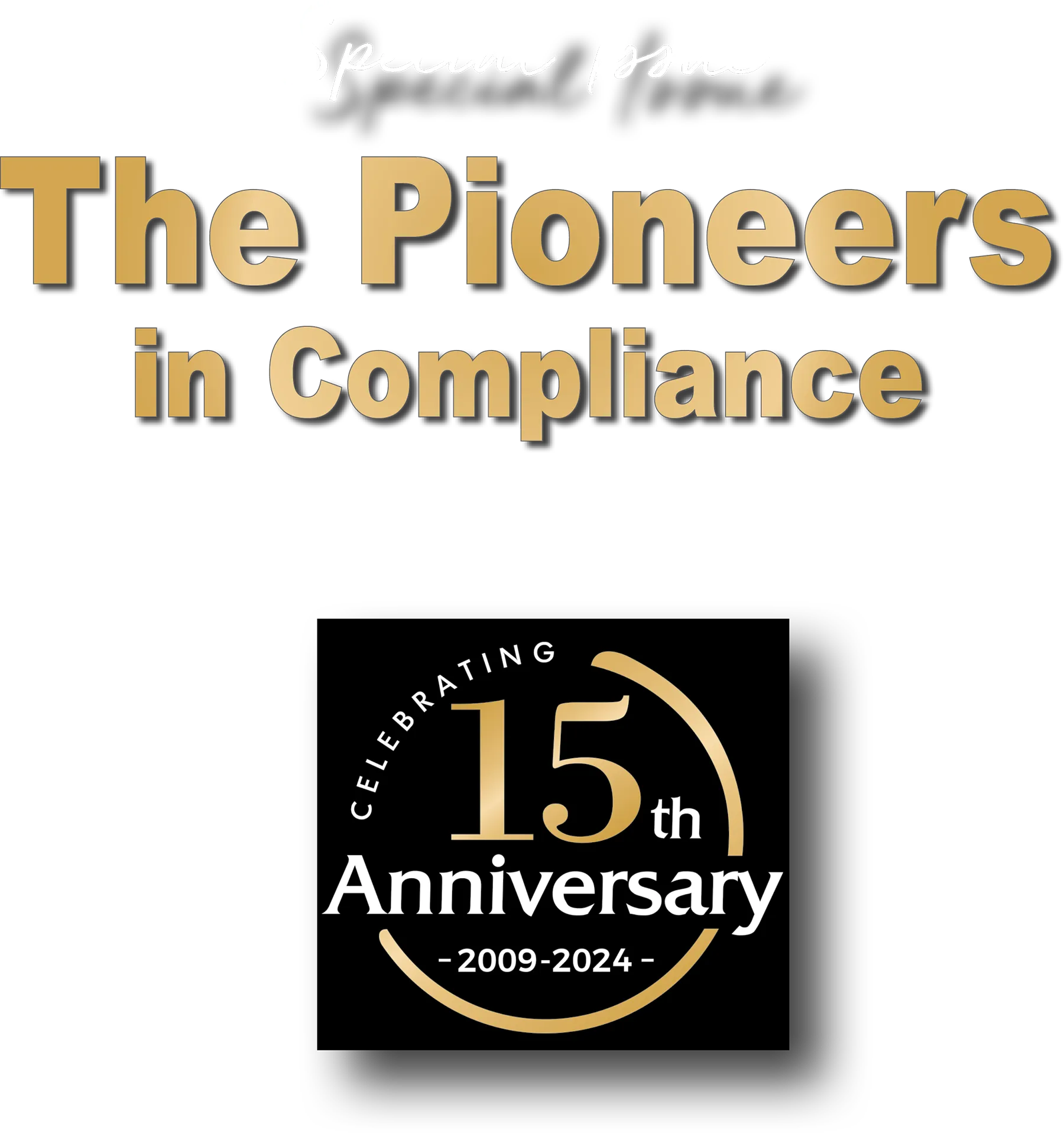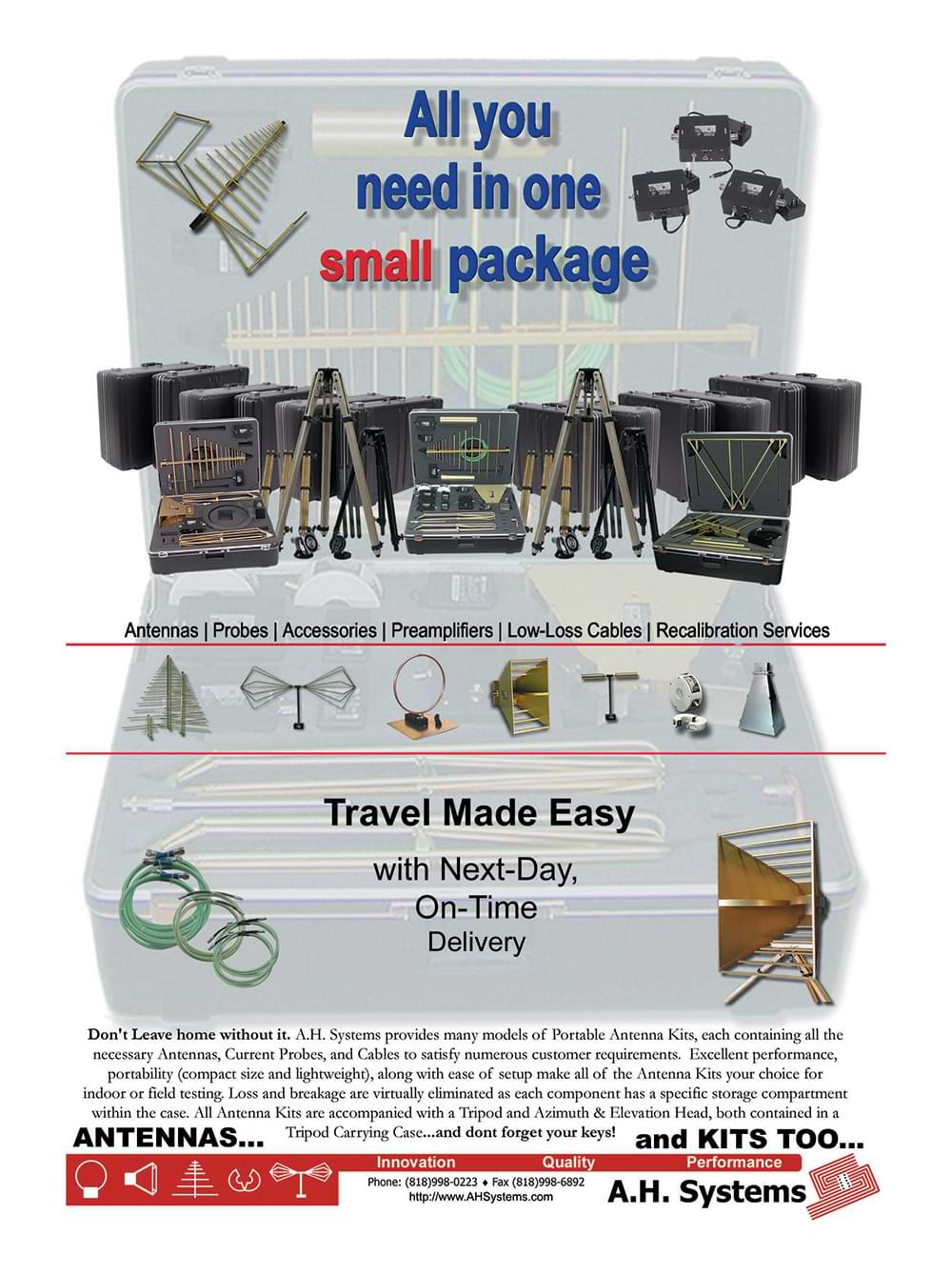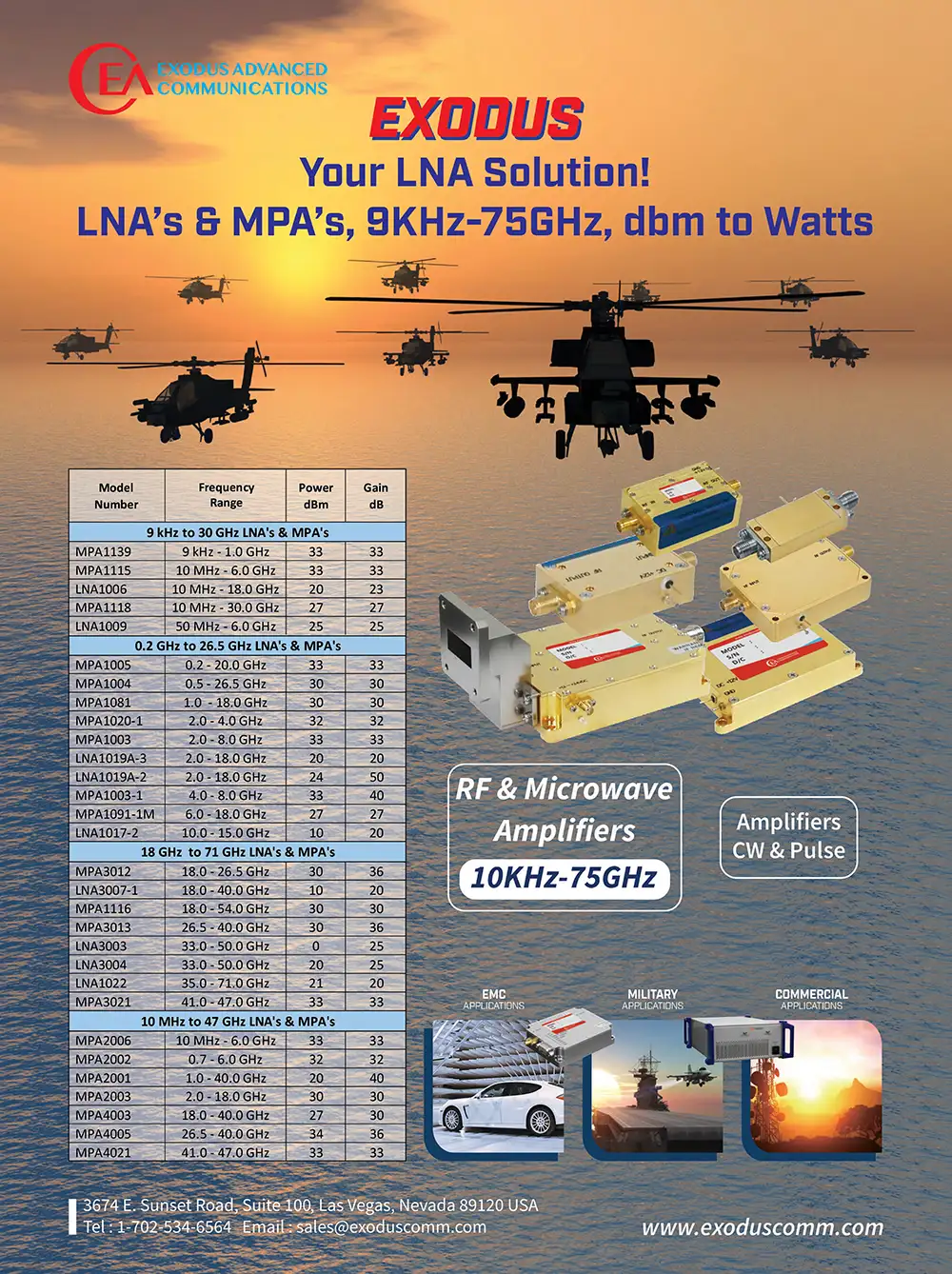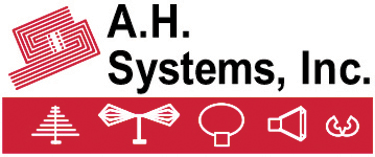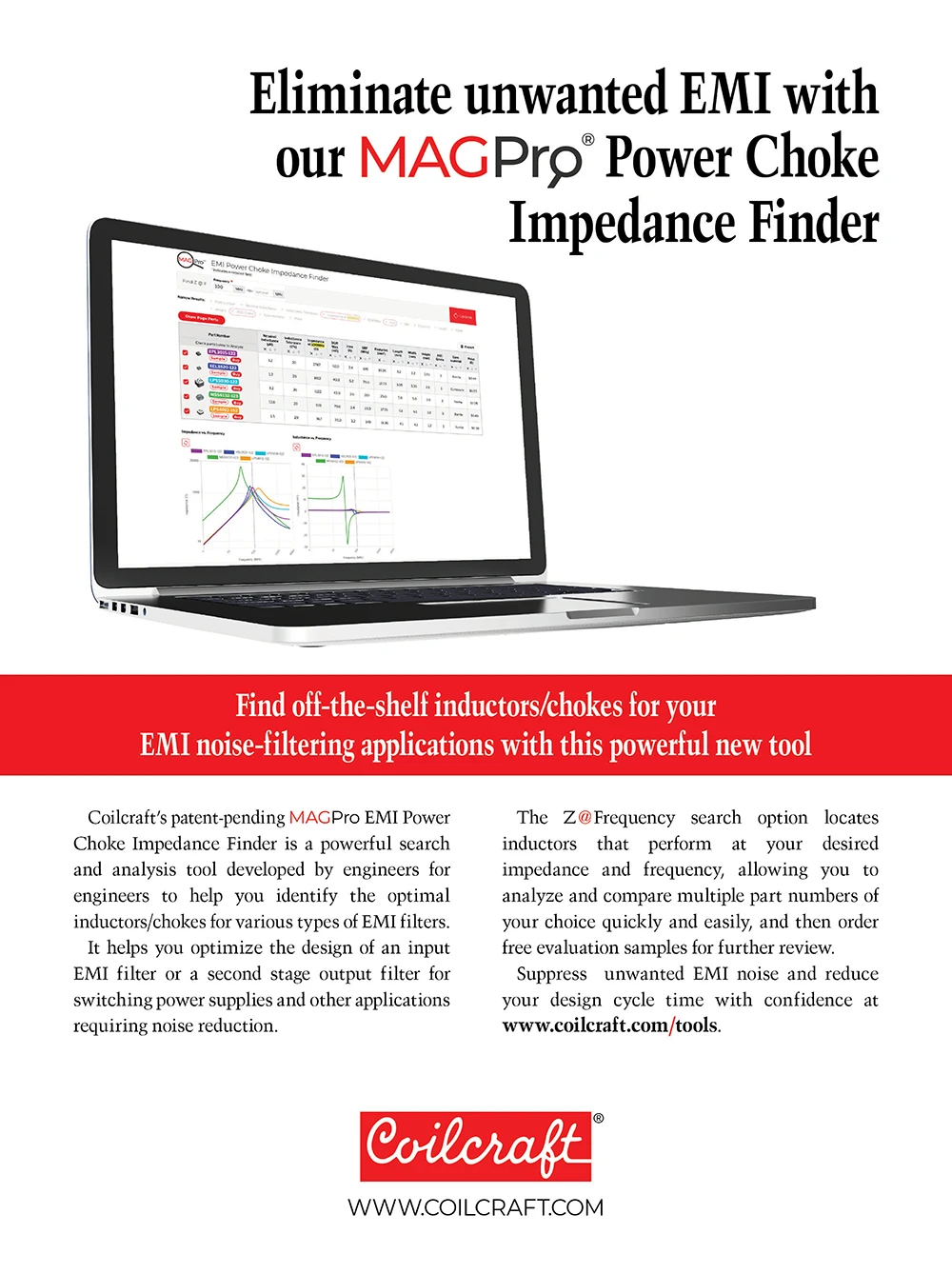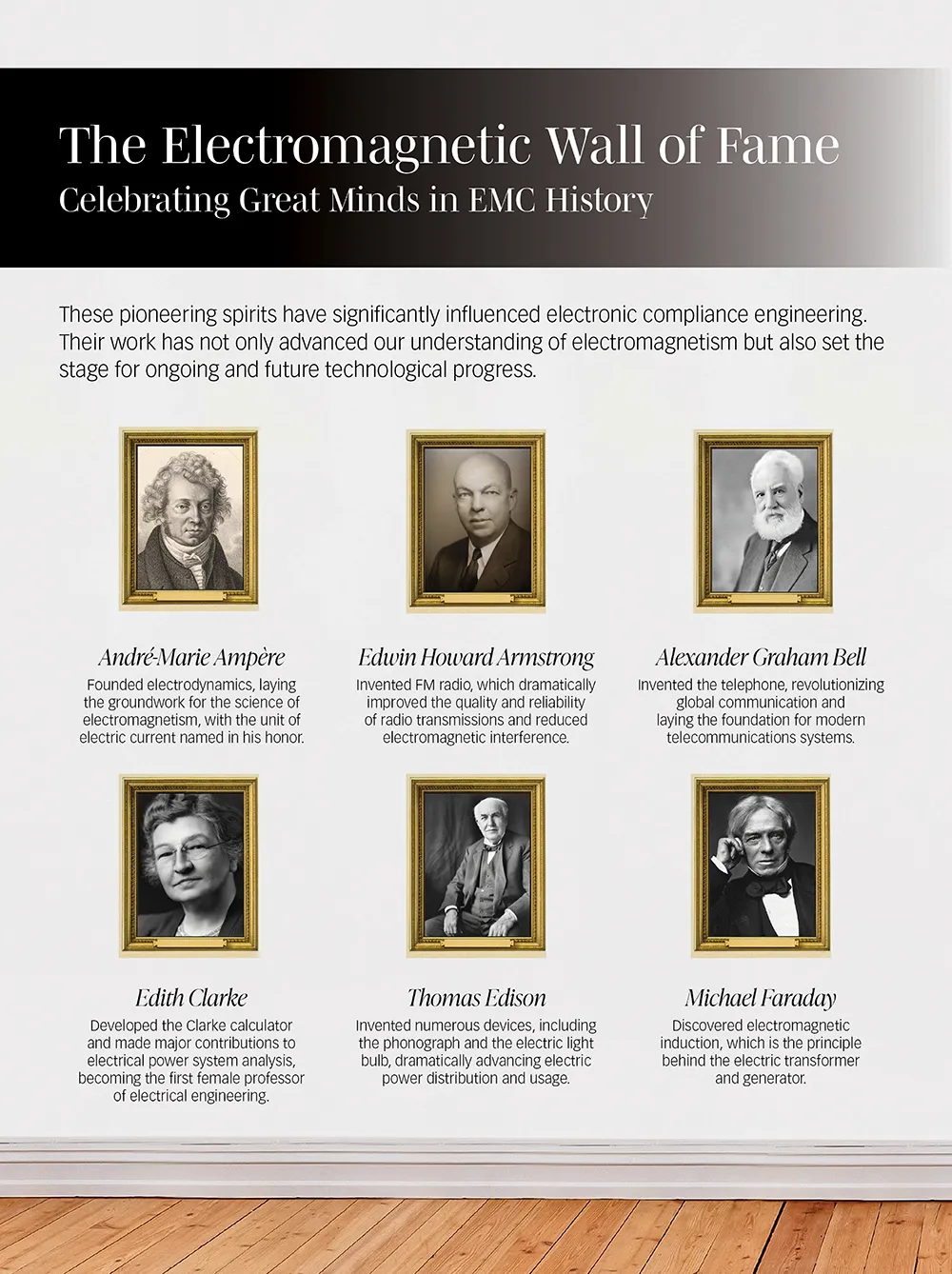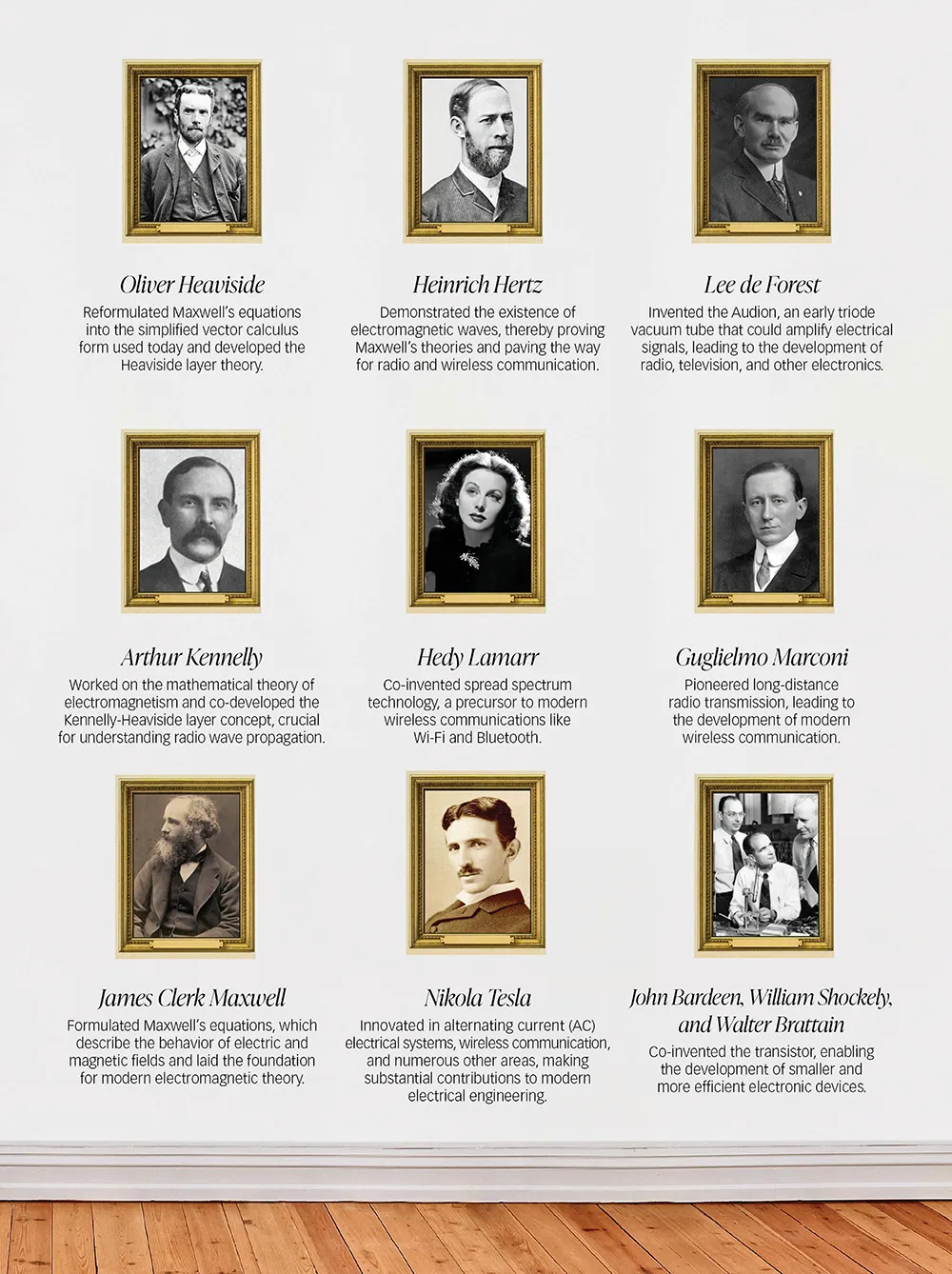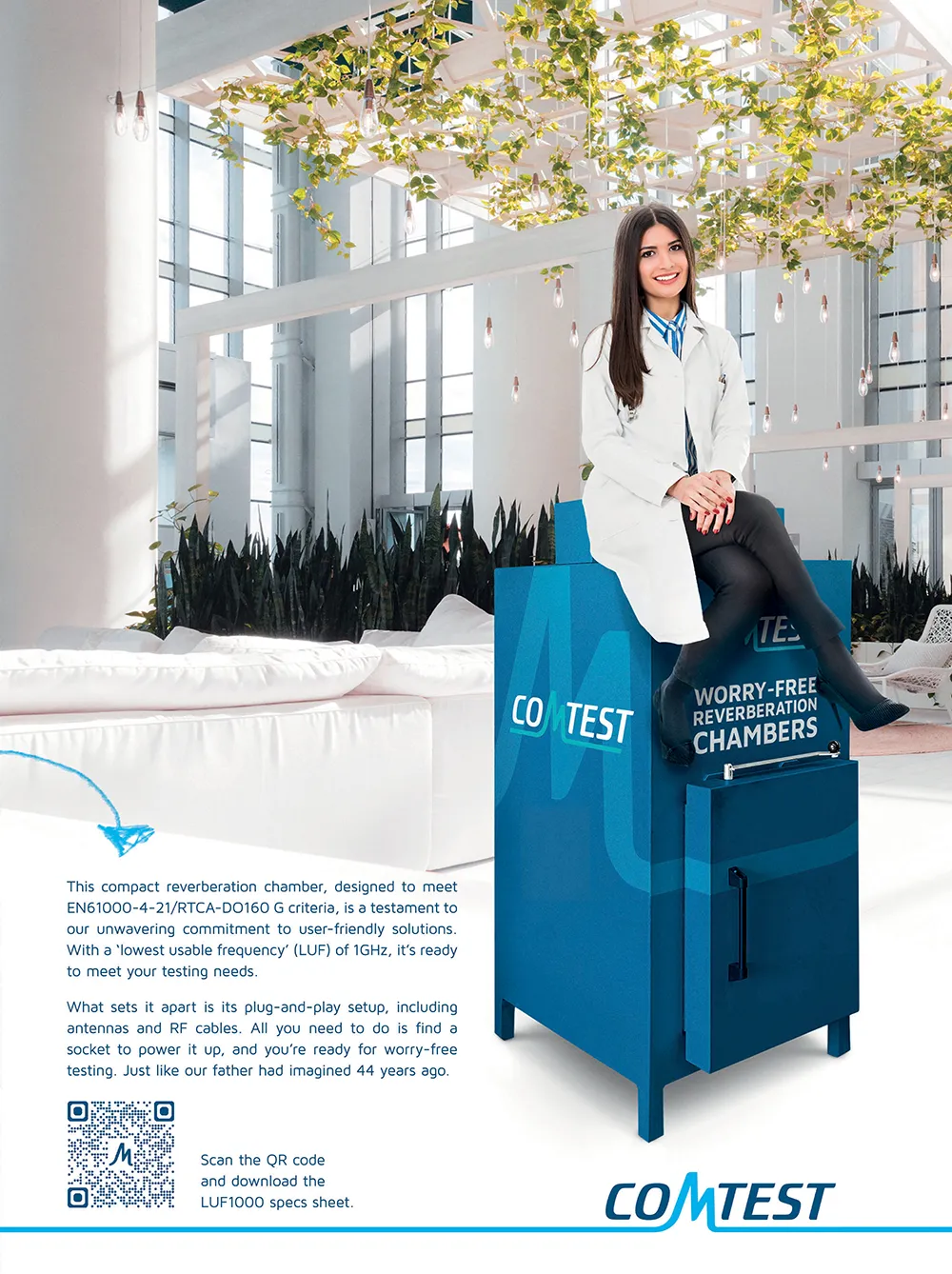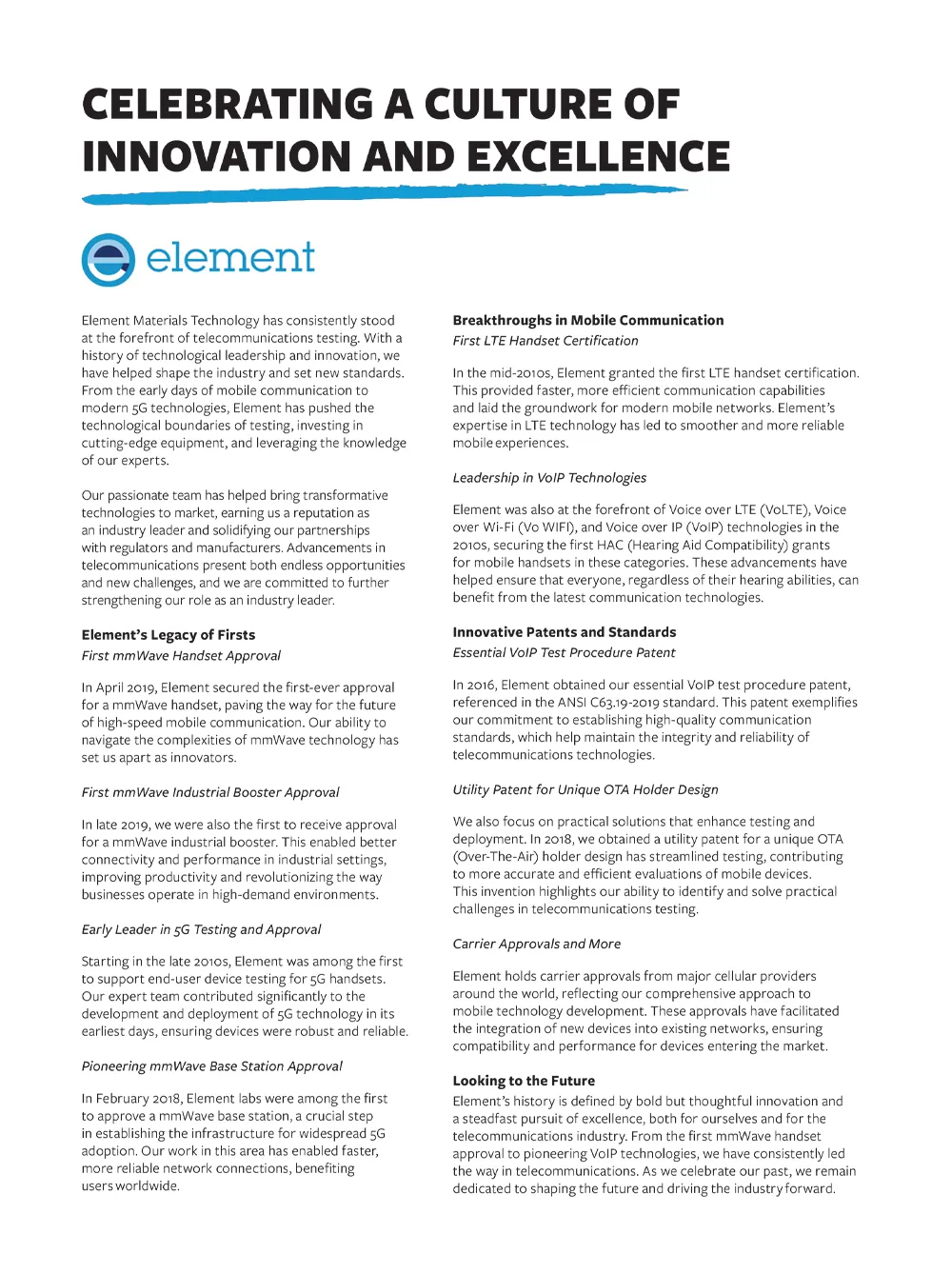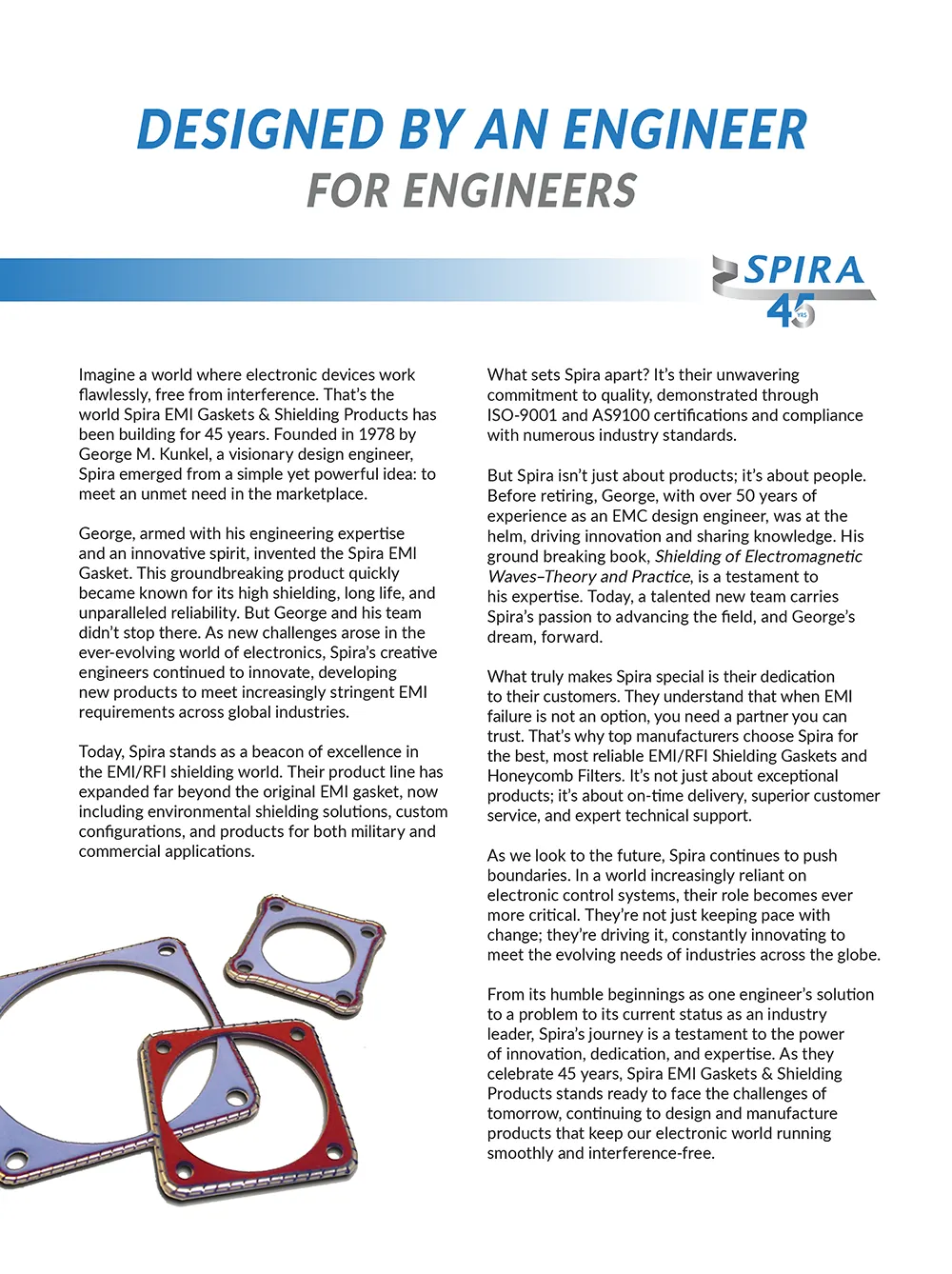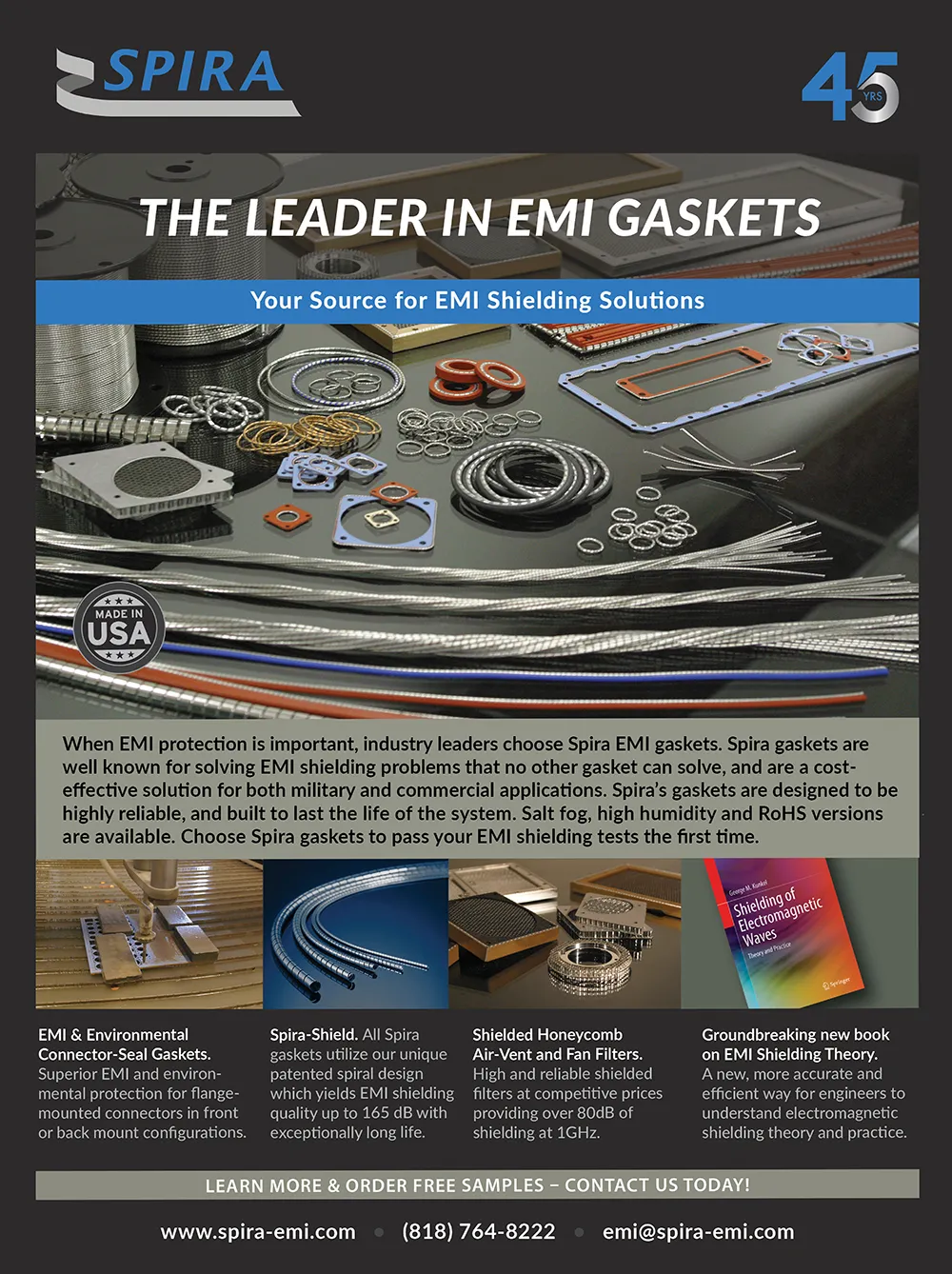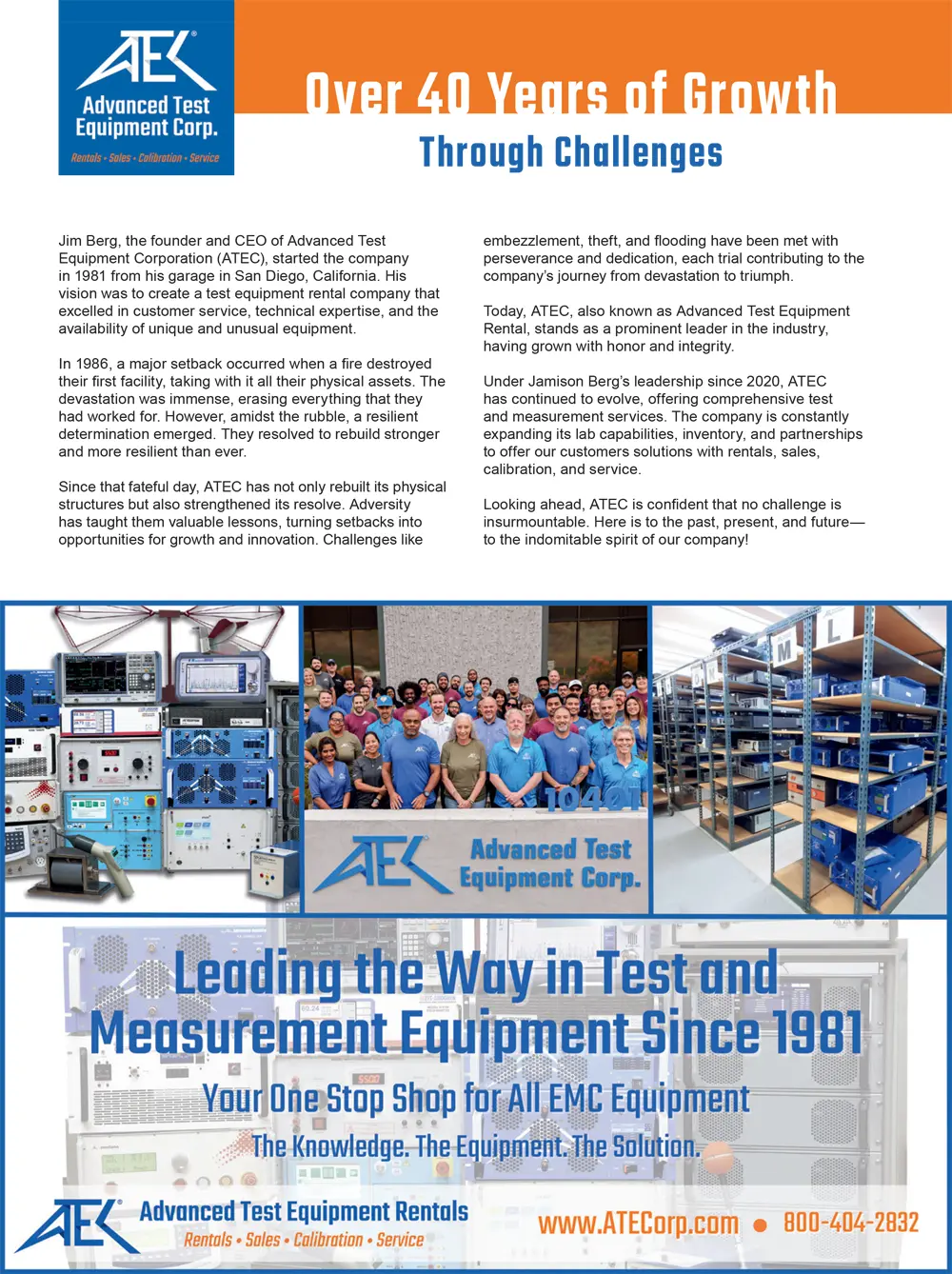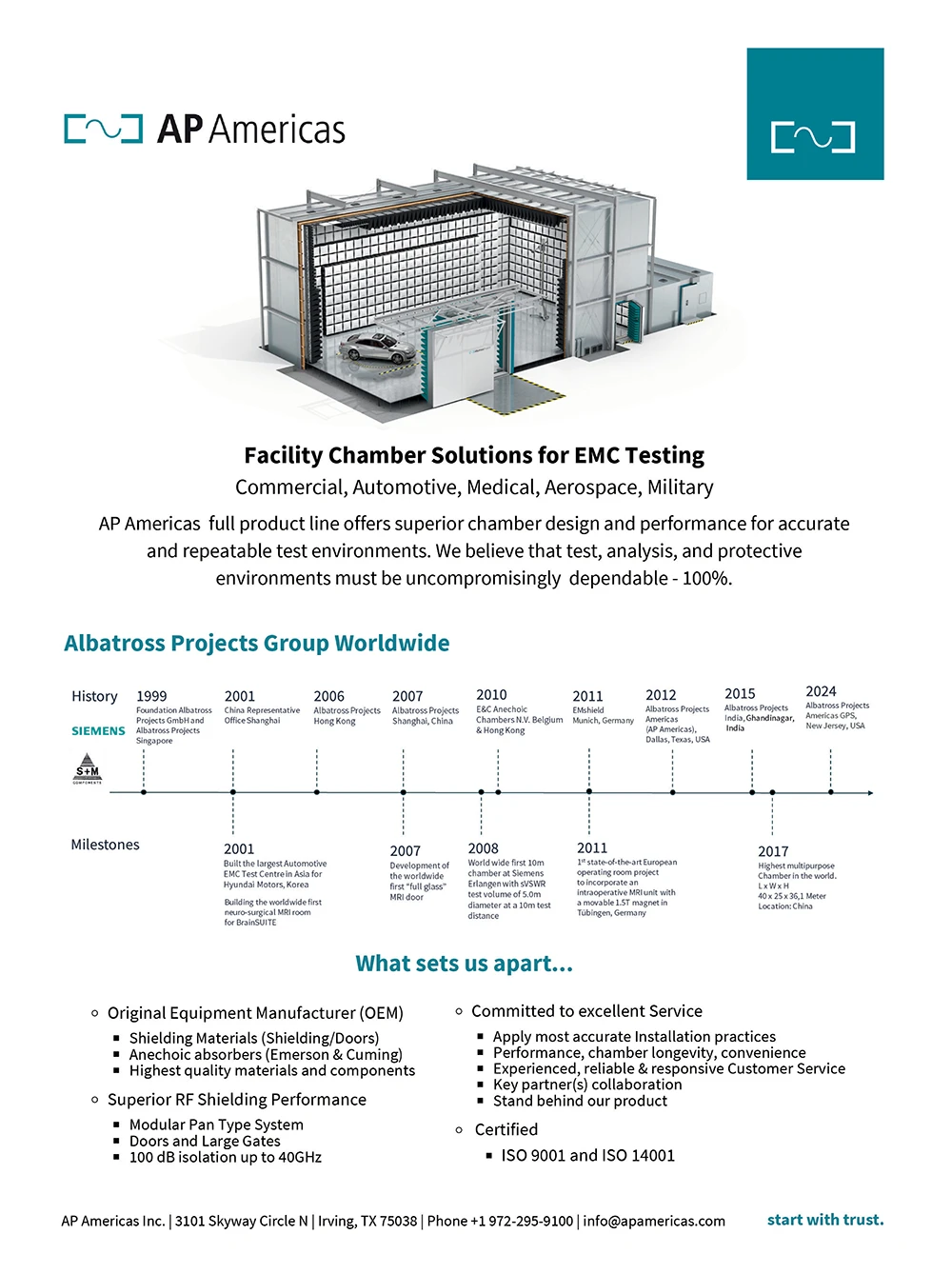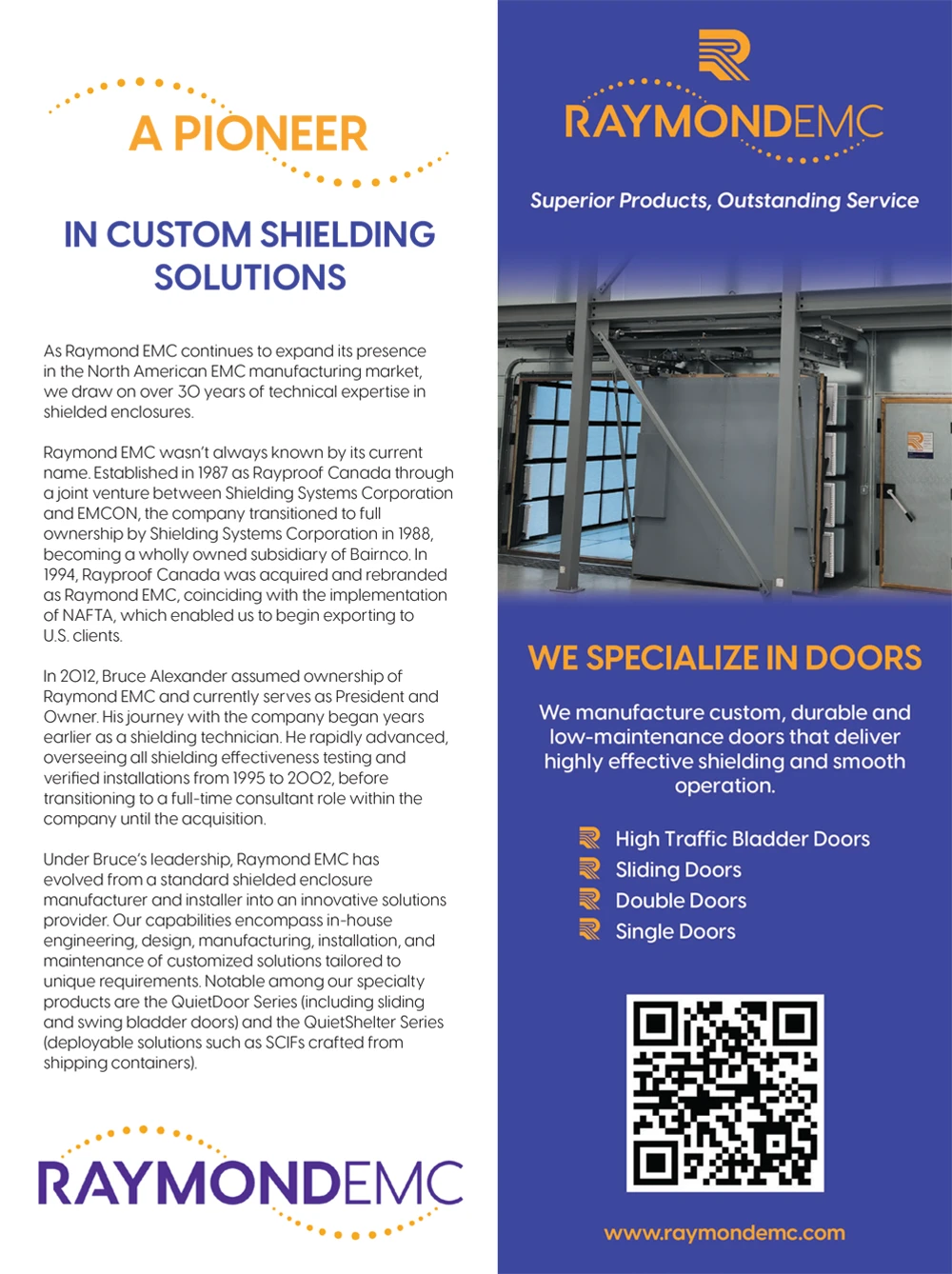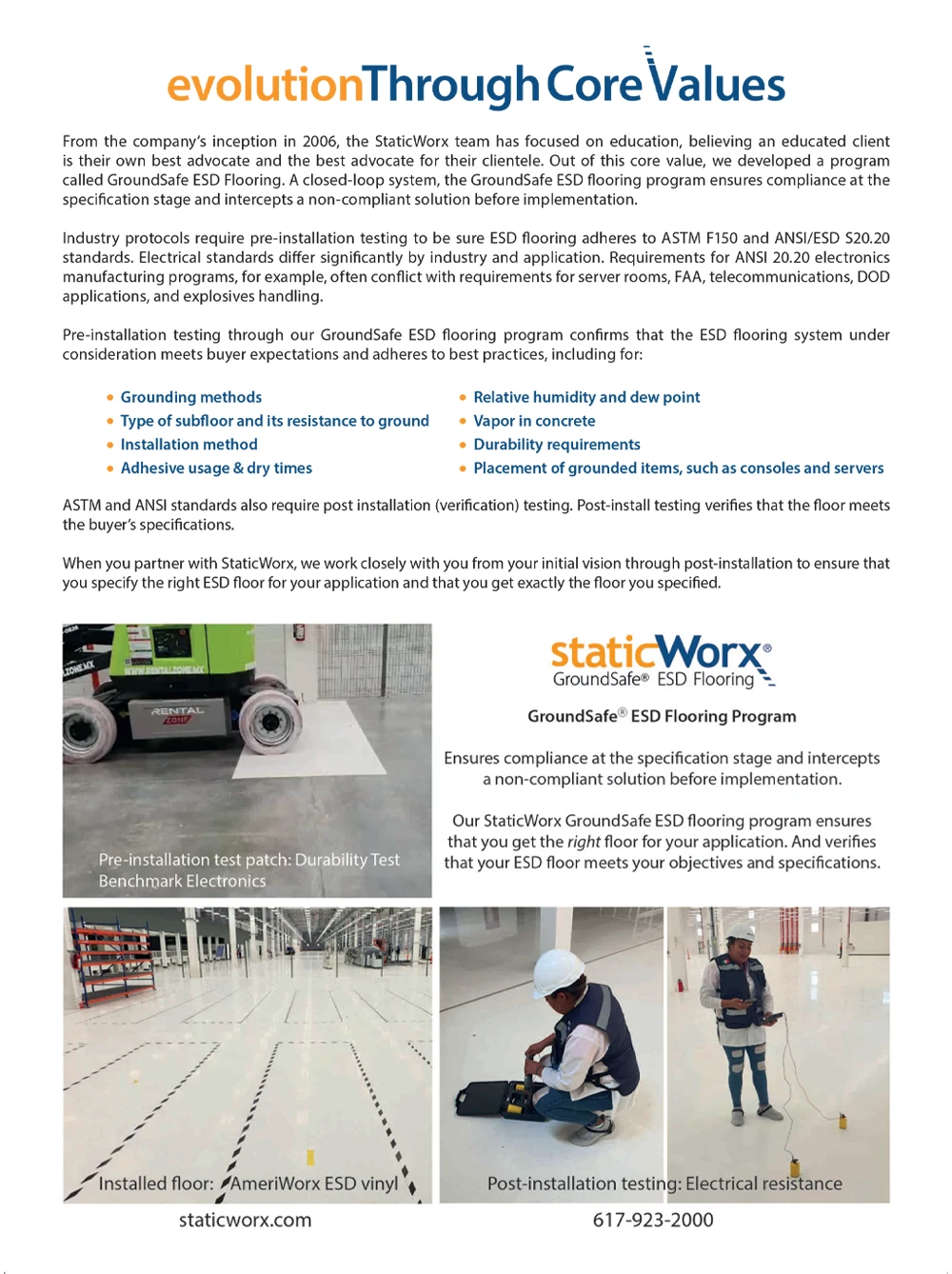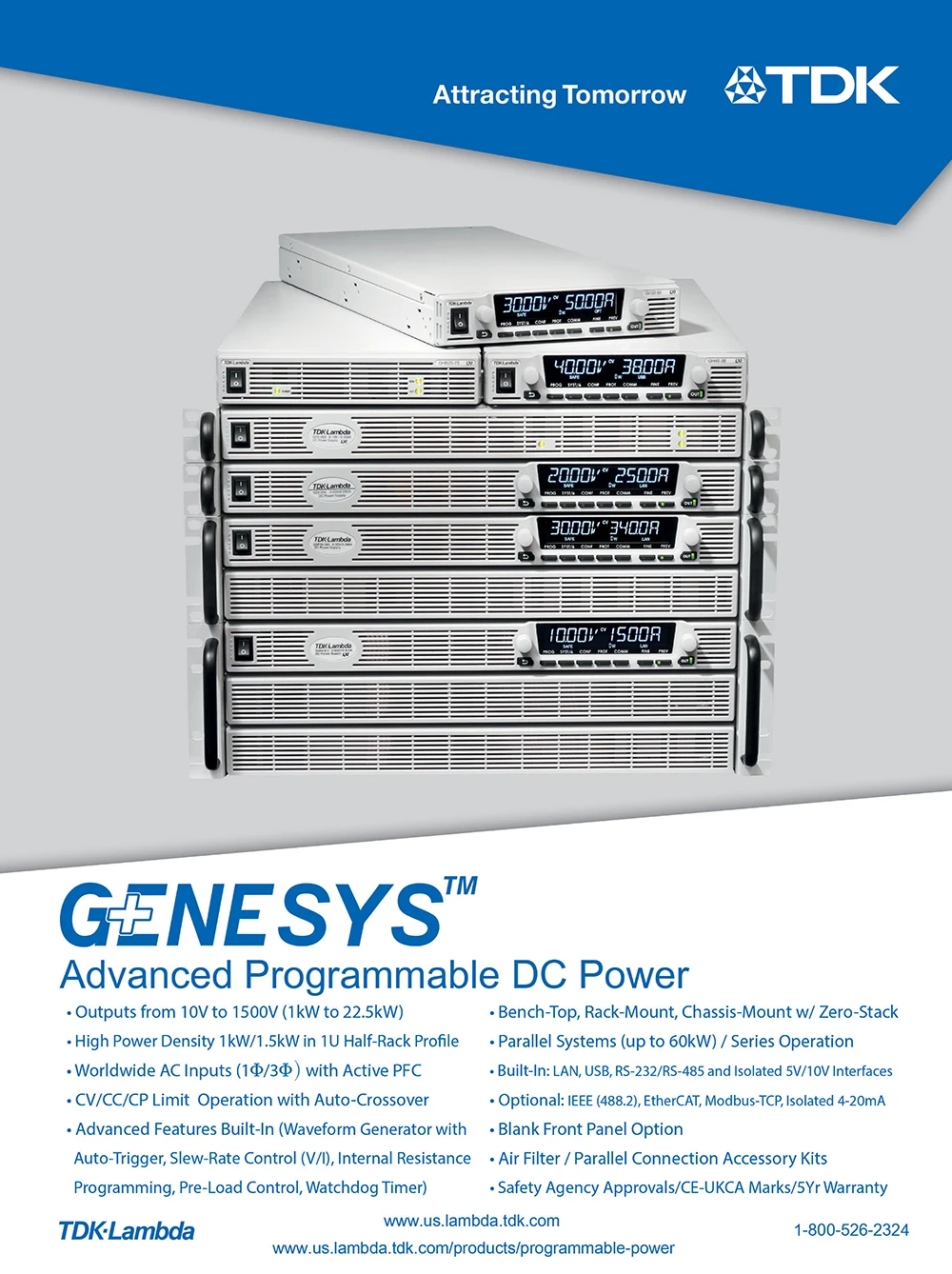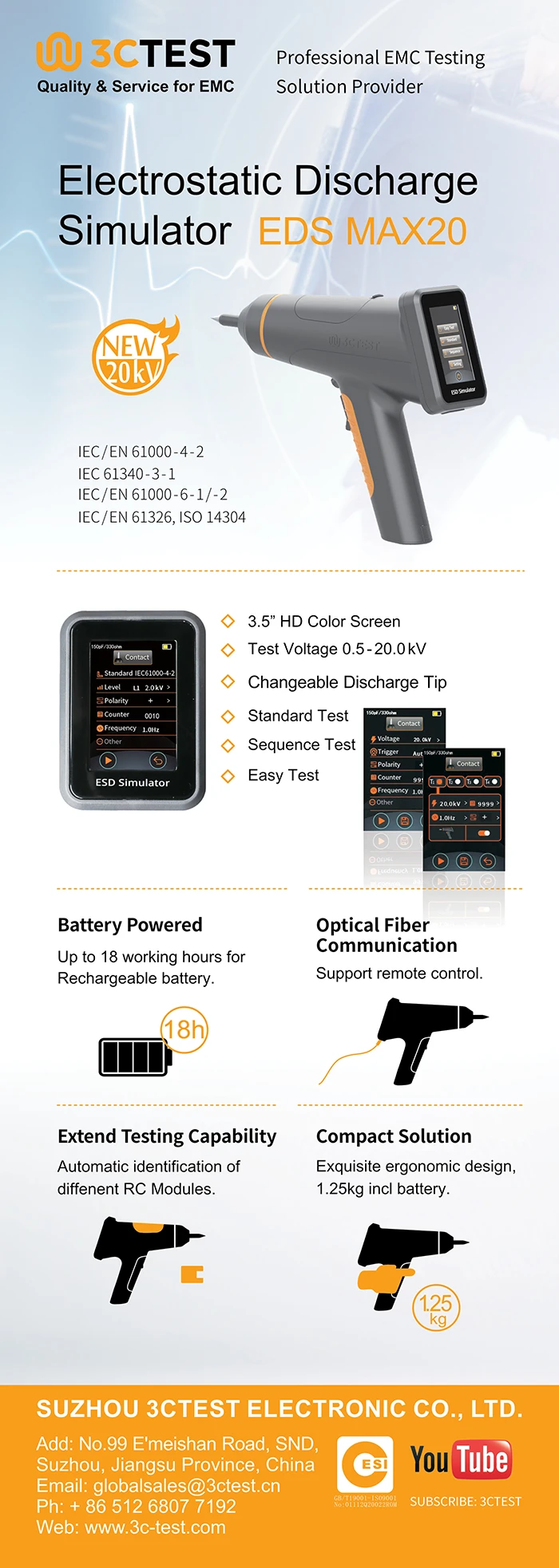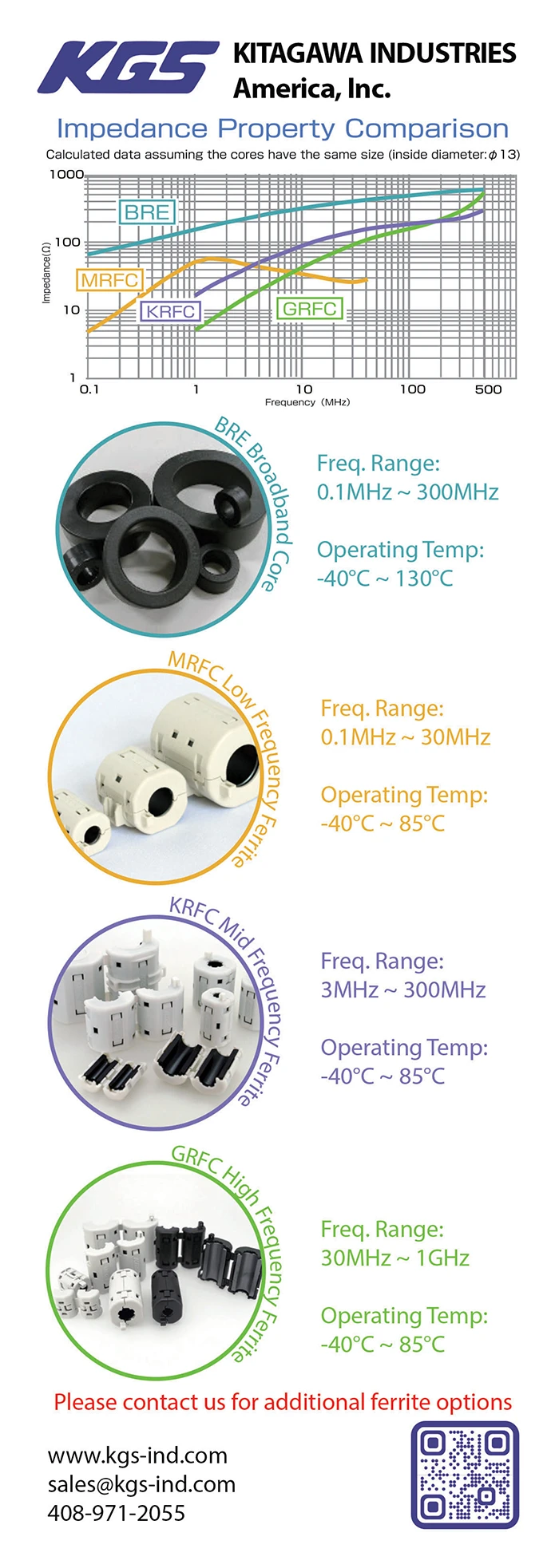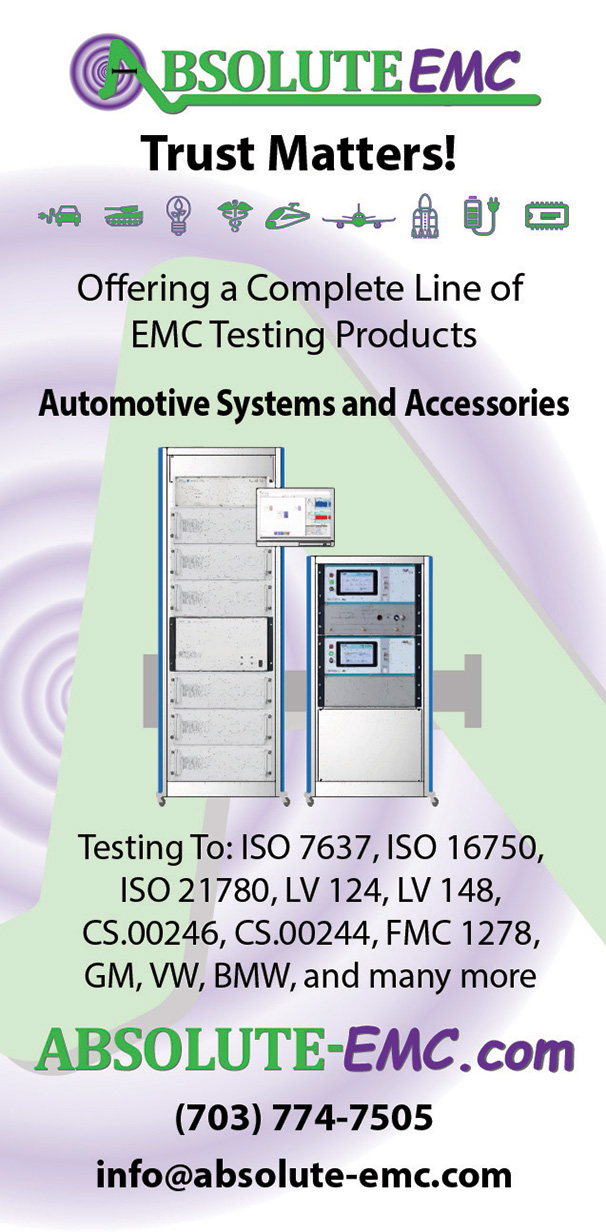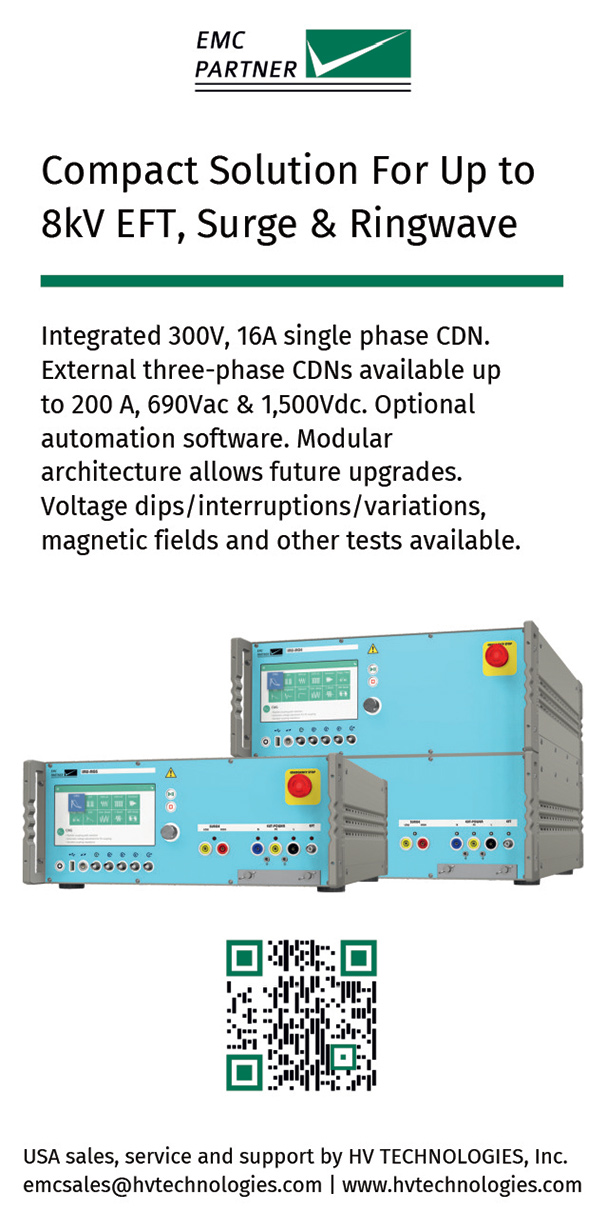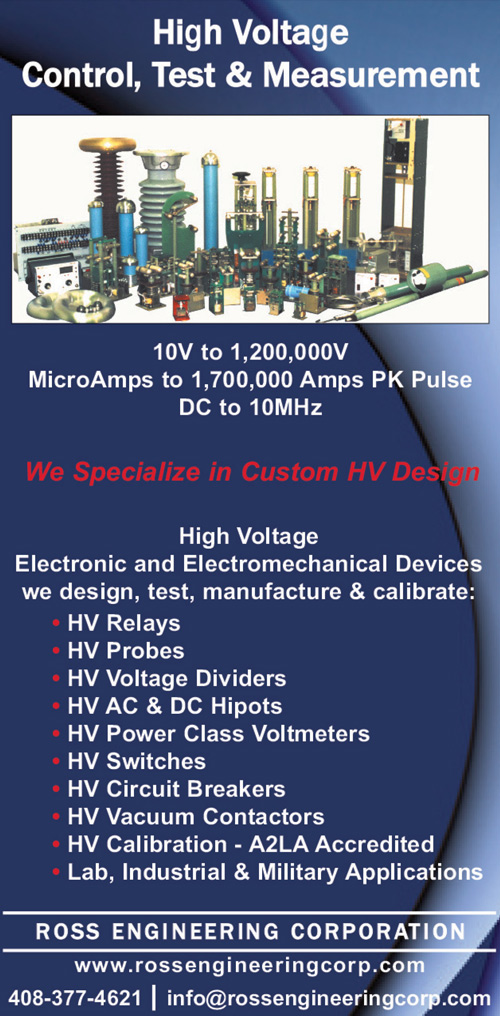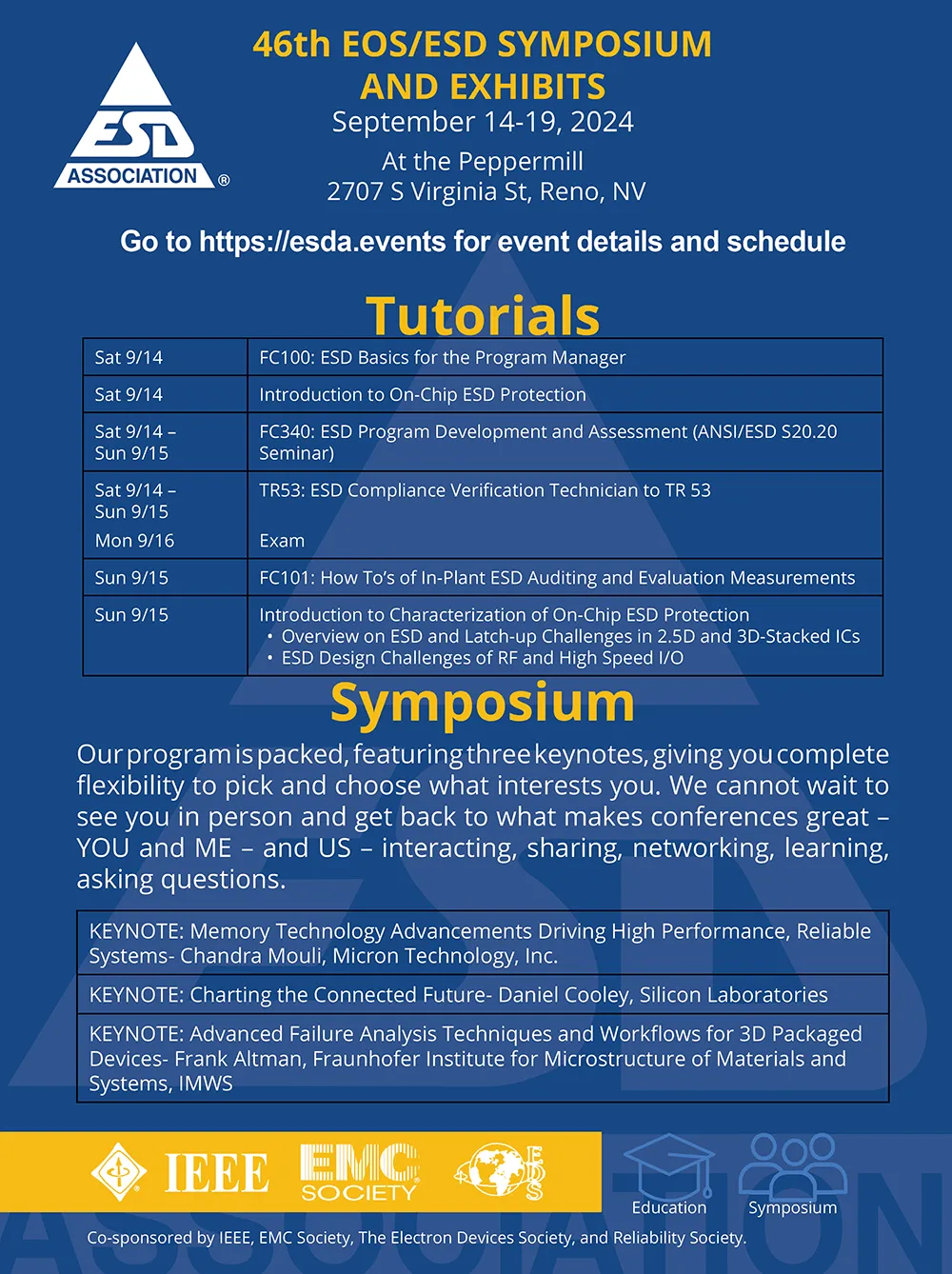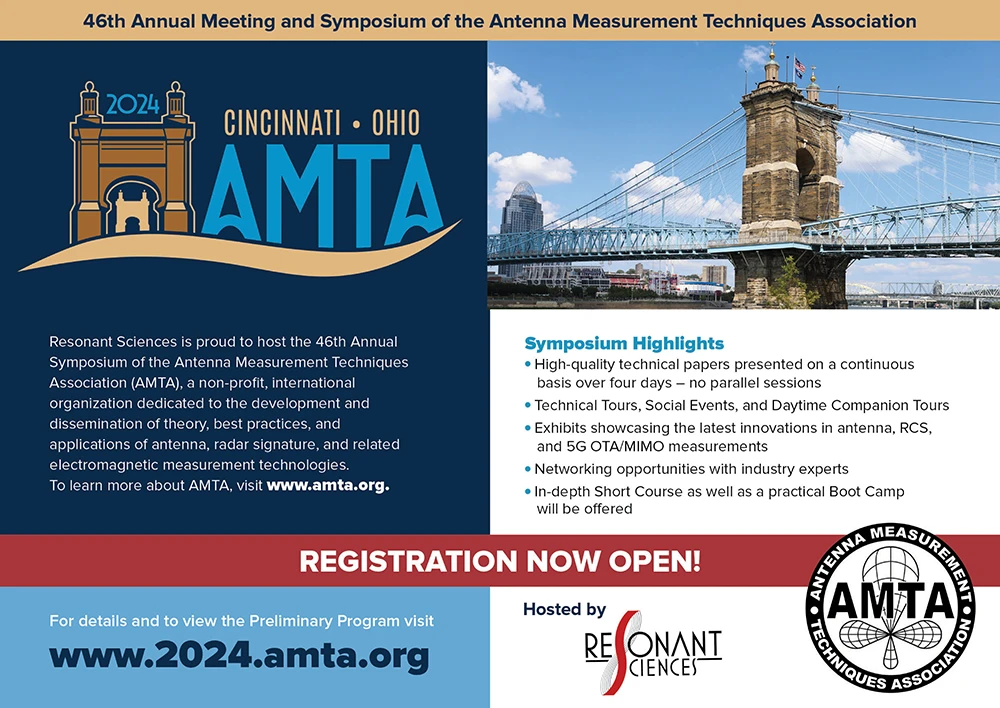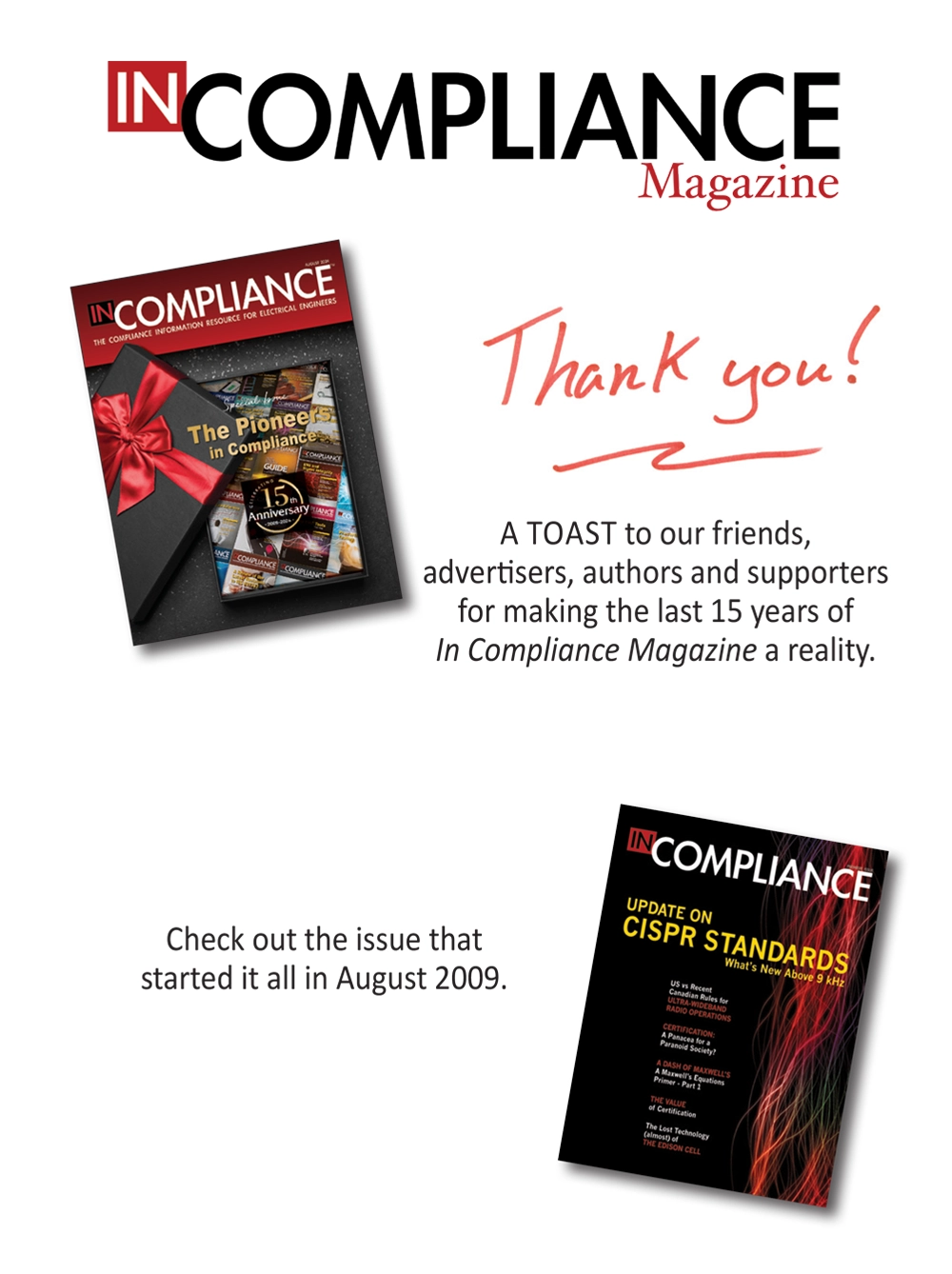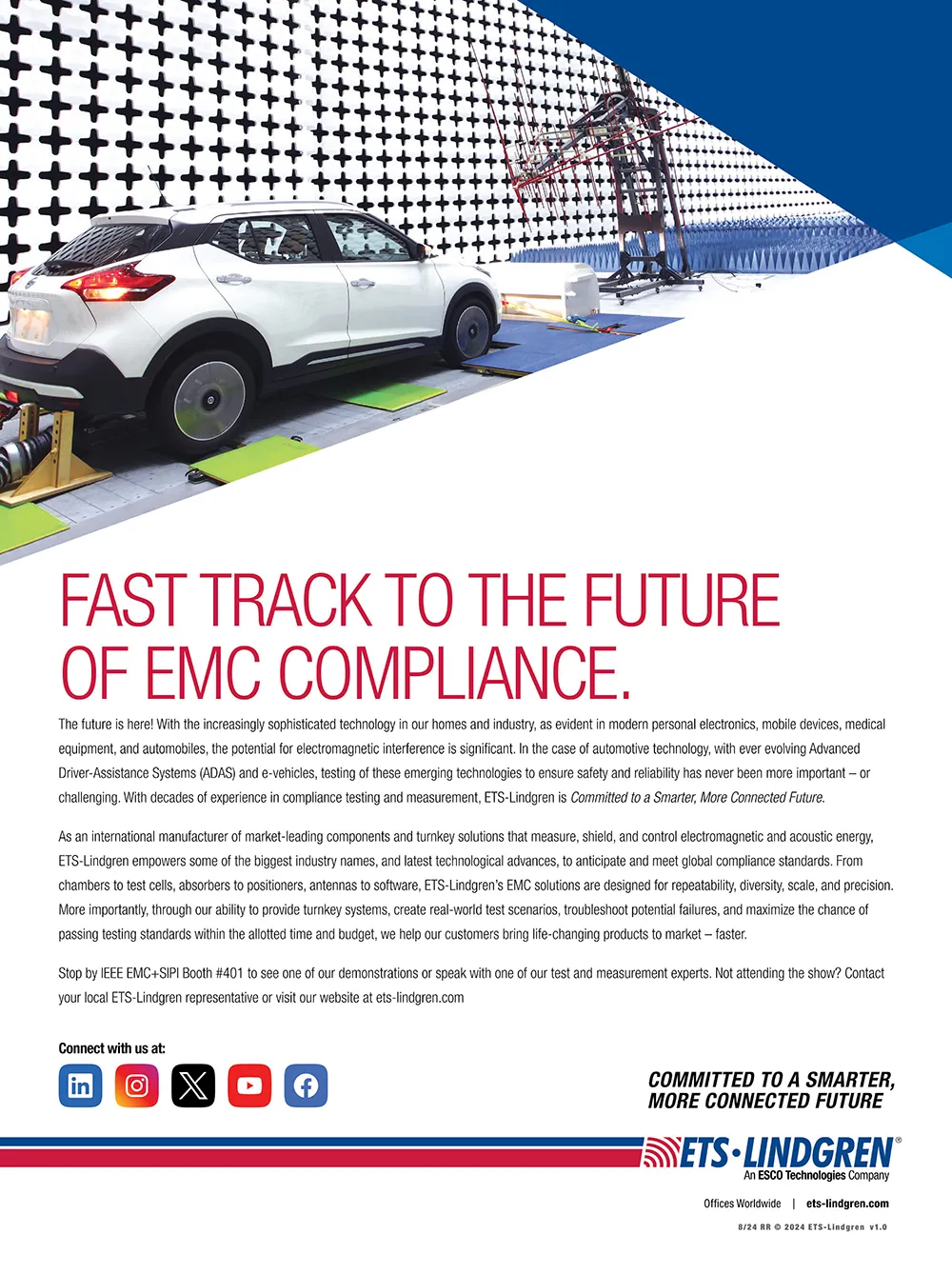
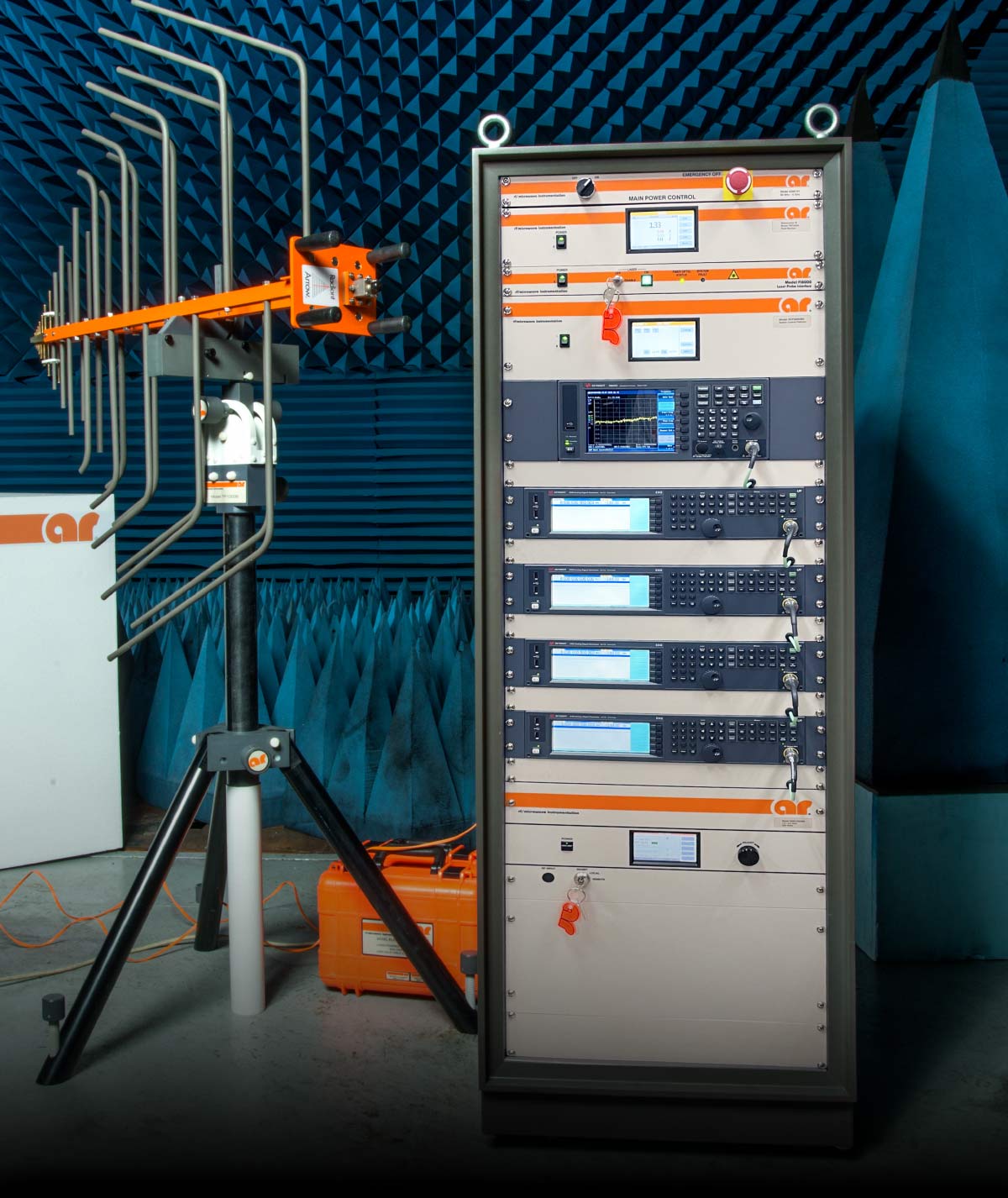
Testing Time by More Than 50%
For example, AR’s Multi-Tone System can reduce the typical time to run traditional tests such as IEC 61000-4-3, ISO 11451, and ISO 11452, by over 50%. In the event of an EUT failure, margin investigation and traditional single tone testing is easily performed through AR’s emcware® software.
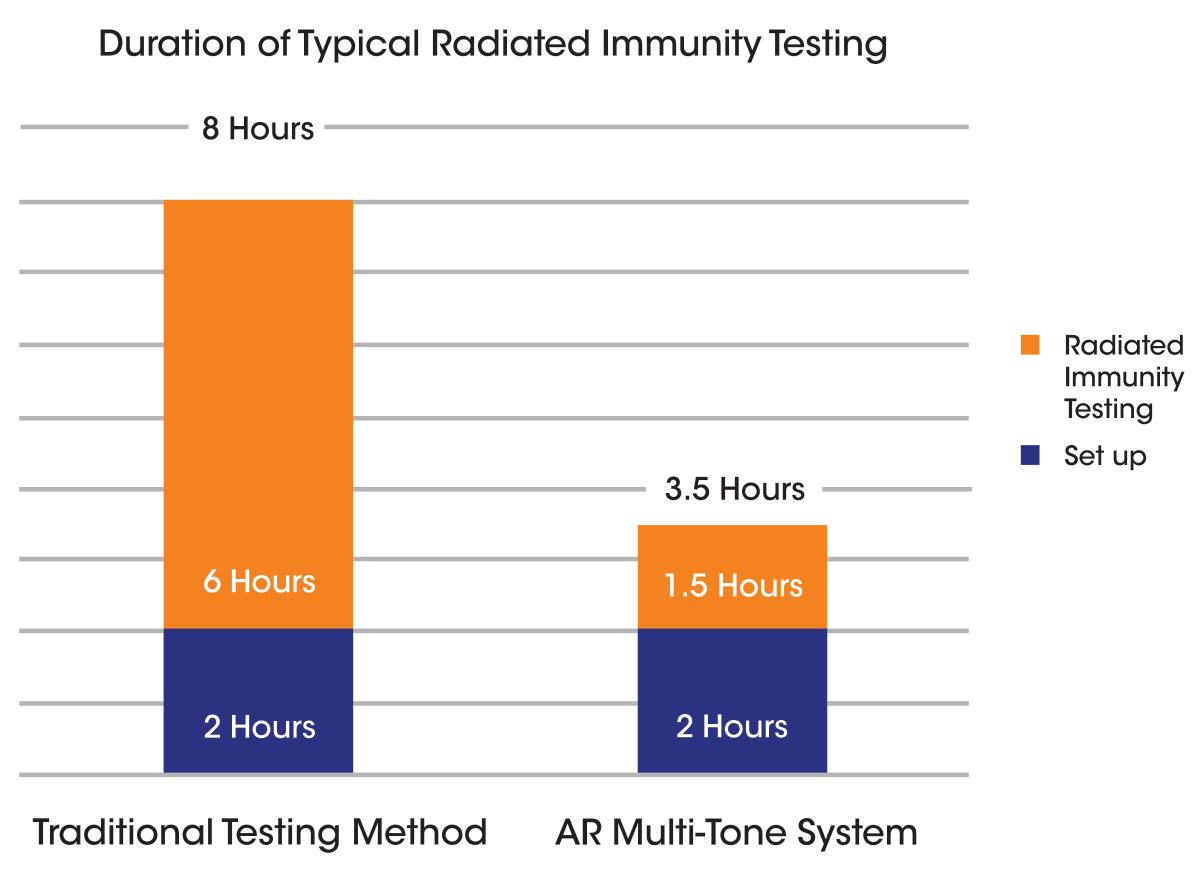
This is a creative way to help your company be more profitable by using your assets more efficiently.
Fifteen years ago, when we launched In Compliance Magazine, we could never have imagined the incredible journey awaiting us. Born out of a dream shared by three determined women, In Compliance has grown from a fledgling publication to a respected and influential voice in the world of electronics compliance engineering.
As we celebrate this milestone anniversary and the publication of our 16th August issue, I reflect on the challenges we’ve faced and the triumphs we’ve achieved along the way. When Conformity closed its doors in March 2009, it felt like a tragic loss. But that setback turned out to be the fertile ground in which we sowed the seeds of our dream.

ISSN 1948-8254 (print)
ISSN 1948-8262 (online)
is published by
Same Page Publishing Inc.
451 King Street, #458
Littleton, MA 01460
tel: (978) 486-4684
fax: (978) 486-4691
© Copyright 2024 Same Page Publishing, Inc. all rights reserved
Contents may not be reproduced in any form without the prior consent of the publisher. While every attempt is made to provide accurate information, neither the publisher nor the authors accept any liability for errors or omissions.
editor-in-chief
Please contact our circulation department at circulation@incompliancemag.com
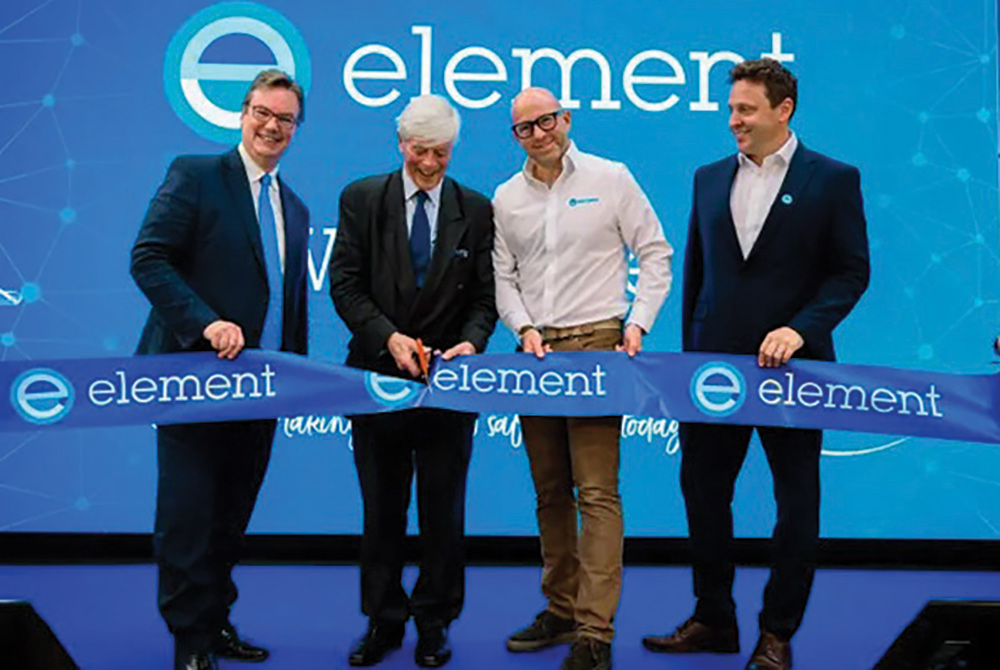

 Visit In Compliance’s booth at these events!
Visit In Compliance’s booth at these events! 2024 IEEE EMC+SIPI
2024 IEEE EMC+SIPI
August 15
Integrating Modules
September 2-5
EMC Europe Symposium
September 11-13
Fundamentals of Product Safety
September 12
Space Applications, EMC, ENV
September 15-19
 46th Annual EOS/ESD Symposium & Exhibits
46th Annual EOS/ESD Symposium & Exhibits
September 19
 2024 Minnesota EMC Event
2024 Minnesota EMC Event
September 22-27
European Microwave Week 2024
September 24-27
Applying Practical EMI Design & Troubleshooting Techniques
Battery Japan
October 7-9
EMC COMPO 2024
October 7-10
 The Battery Show
The Battery Show
October 10
Cyber-Security Webinar
October 15
 2024 San Diego Test Equipment Symposium
2024 San Diego Test Equipment Symposium
October 24-November 1
 46th Annual Meeting and Symposium of the Antenna Measurement Techniques Association
46th Annual Meeting and Symposium of the Antenna Measurement Techniques Association
October 28-October 31
Military Standard 810 (MIL-STD-810) Test Training
According to a Notice of Apparent Liability for Forfeiture, Taiwan-based ASUSTek Computer faces a fine of $367,436 for modifying one of its WiFi adapter models and a separate WiFi router model that had been previously authorized by the Commission…
In a Notice of Proposed Rulemaking (NPRM), the FCC mapped out plans to require broadband providers to submit confidential filings with the Commission, detailing their plans to mitigate potential vulnerabilities in their use of the border gateway protocol (BGP), the technical protocol critical to the routing of information across the internet…
The Pioneers of Today’s EMC Society

n the mid-1950s, a group of professionals in the electrical engineering specialty of radio frequency interference (RFI) began to formulate the idea of creating an organization devoted to their specific technical area of expertise. These informal discussions reached a new level at a luncheon on February 27, 1957, during the Third Conference on Radio Interference Reduction, sponsored by the United States Army Signal Engineering Laboratories and conducted by the Armour Research Foundation of the Illinois Institute of Technology in Chicago.
In his luncheon speech, Fred Nichols, Vice-Chairman of the Radio Interference Technical Committee of the Los Angeles area, proposed starting a National Professional Group on RFI. Six other individuals at the luncheon, including Anthony Zimbalatti, Milton Kant, Harold Schwenk, John Lucyk, Albert Ruzgis, and S. Nellis, enthusiastically endorsed the idea and volunteered to make it happen.
Compliance Engineering
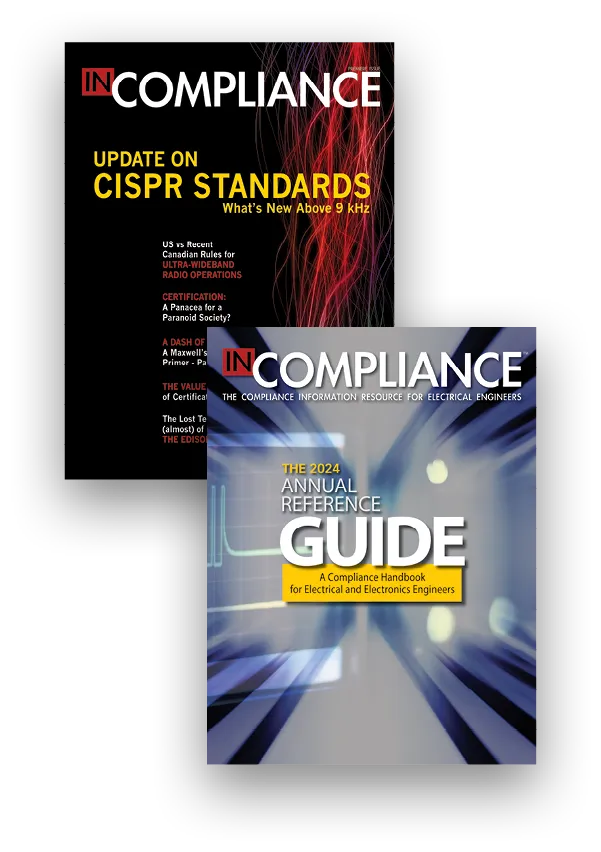

We would carry the torch lit by the predecessor of our predecessor, Compliance Engineering (many of you will remember this publication). There truly was no place to go from the final issue of Conformity but up. Things could only get better. We grabbed the torch and ran with it, publishing the premiere issue of In Compliance Magazine in August 2009. In Compliance debuted at the IEEE EMC Symposium in Austin, TX. And in January 2010, we mailed our first monthly issue.

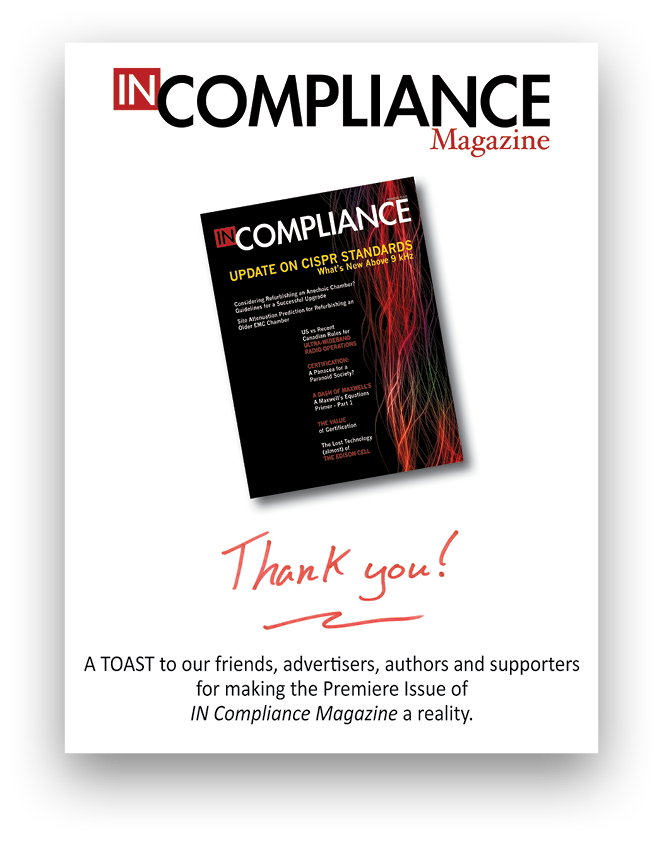
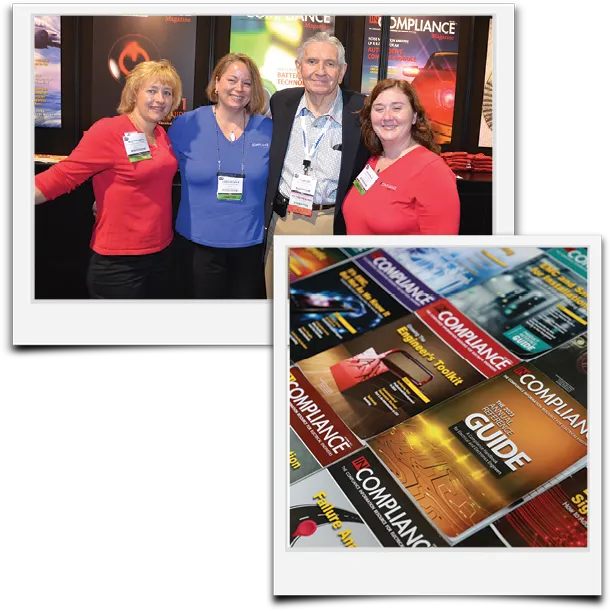
From the very beginning, a talented roster of authors and editorial contributors have contributed and supported our mission. These industry experts have consistently provided the insightful articles, technical papers, and thought leadership pieces that have made In Compliance Magazine the most relevant and useful resource for compliance professionals. Their dedication and expertise have been instrumental in ensuring the magazine remains at the forefront of industry developments.
With unwavering support from our advertisers, In Compliance delivers expert editorial on design, troubleshooting, problem solving, compliance and careers to readers worldwide. Some of our advertisers have been with us since the very beginning, some have stepped into the fold along the way. To all of our advertisers, with deep gratitude, thank you.
And the final pillar of this remarkable equation, you, our readers. You tie the pieces all together. You are the reason we picked up that torch back in 2009 and have continued to run this marathon publishing venture that is In Compliance Magazine!
We’ve built a comprehensive website that stores 15 years of compliance content, an extensive vendor directory, a rotating resource library, and a weekly newsletter. The website features the latest industry news, in-depth articles, and a wealth of resources designed to support compliance professionals. The vendor directory connects readers with leading suppliers and service providers, while the resource library offers a curated collection of white papers, technical documents, and industry standards. The newsletter keeps subscribers informed with timely updates and exclusive content.
Now, as we celebrate the 15th anniversary of In Compliance Magazine, we take a moment to reflect on the extraordinary journey that brought us here. Our story is a testament to the power of perseverance, innovative leadership, and the incredible impact that a shared vision can have on an entire industry.



The In Compliance Team

his article provides an extension of my article in the June 2021 issue of In Compliance Magazine, describing the different ways to protect power system electronics in high-voltage power control houses found in HV substations [1]. The intention here is to provide a specific plan to start to harden power grids against the fields produced by high-altitude electromagnetic pulse (HEMP) and intentional electromagnetic interference (IEMI). In addition, we will discuss the differences in protecting power company substation control houses and control centers and even power generation stations against these threats. Finally, there will be a discussion of the approach to protect the high voltage transformers (V ≥ 100 kV) against the late-time portion (E3) of the HEMP, which also will provide protection against an extreme geomagnetic storm if it were to occur.
While the worst-case levels of the early-time (E1) HEMP environment have not changed, this is not the case for the late-time (E3) HEMP environment, due to the work of the U.S. EMP Commission [2]. The worst-case level of E3 HEMP has doubled, and the IEC is in the process of increasing the worst-case level in IEC 61000-2-9 Ed.2 draft [3]. While this increase is significant, the same new draft version of IEC 61000-2-9 also discusses the fact that the worst-case E1 HEMP field occupies a very limited portion of the ground exposure. And, when considering that there are over 9000 high voltage substations in the U.S., they all cannot be illuminated at the worst-case E1 peak HEMP level with a single high-altitude burst. Also given the costs of hardening a large number of buildings, there have been discussions in the IEC and in other standards organizations considering resilience aspects to reduce the cost burden of protection [4].

his month we explore the impact of the return path impedance and the return current level on common-impedance coupling between circuits. The measurements presented here were performed on a custom PCB containing audio, video, and high-current circuitry, where the return paths for each circuit were selectively shared with other circuits. This topic had been previously discussed in [1], where the measurements were taken with a first-generation PCB. The PCB has since been redesigned to lend itself to future modifications and to contain off-the-shelf, readily available components.
If a company meets the requirements of ANSI/ESD S20.20 or IEC 61340-5-1, the ESD control items used to mitigate risks of ESD shall be qualified prior to their initial use within the ESD control program. Most of the ESD control items require environmental conditioning during the product qualification testing process. This is typically conducted at 12% ± 3% RH and 23°C ± 3°C. If the ESD control item being qualified meets the requirements of ANSI/ESD S20.20 or IEC 61340-5-1, then humidity controls are not required as the item has been shown to function in a worst-case environment.
hen I first started working as an independent EMC consultant, I didn’t have nearly half of the equipment I do now. The first piece of equipment I owned was a Siglent swept-type spectrum analyzer, and I made my own near-field probes and RF current probes following Ken Wyatt’s book [1].
I remember a case in which I needed to troubleshoot an immunity issue, but I didn’t have any equipment to inject noise into the system. At the time, I called my mentor, Keith Armstrong, and asked him if there was any way to solve the problem, given the limited kit I had. He said to me, “Have you heard about the reciprocity theorem?”
Here, I quote Henry Ott’s explanation in his book [2]:

You can do that here.
View Index


